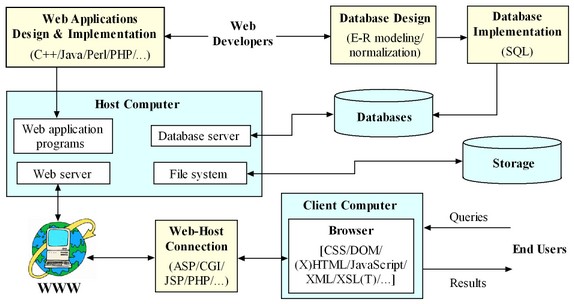A Generic Web System Structure
A commercial web site is often implemented by using a three-tiered client-server architecture, which consists of three layers:
-
User Interface
-
It runs on a desktop PC or workstation (the client) and uses a standard graphical user interface, which is usually implemented by using (X)HTML and CSS. The main function of this tier is to translate tasks and results to something the user can understand.
-
Functional Module
-
This level actually processes data.
It may consist of one or more separate modules running on a workstation or application server.
This tier may be multi-tiered itself.
The languages used for this module are usually with embedded SQL such as JDBC and PHP.
-
Database Management System (DBMS)
-
A DBMS is a software system that manages databases and allows users or other programs to access or modify the data in the databases.
Two of DBMSs are Oracle and MySQL.
The three-tier design has many advantages over traditional two-tier or single-tier designs, the chief one being: The added modularity makes it easier to modify or replace one tier without affecting the other tiers.

